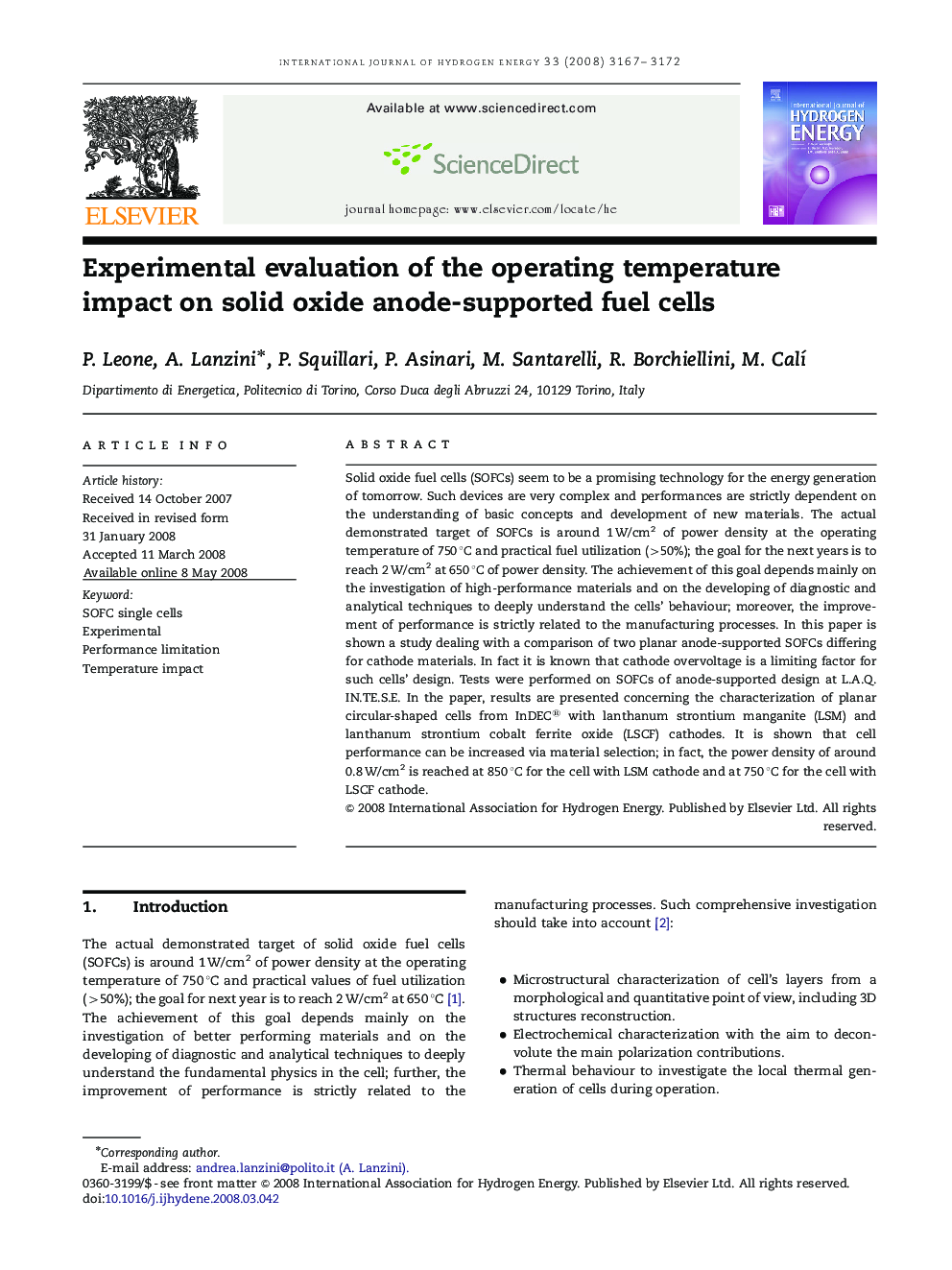| Article ID | Journal | Published Year | Pages | File Type |
|---|---|---|---|---|
| 1279623 | International Journal of Hydrogen Energy | 2008 | 6 Pages |
Solid oxide fuel cells (SOFCs) seem to be a promising technology for the energy generation of tomorrow. Such devices are very complex and performances are strictly dependent on the understanding of basic concepts and development of new materials. The actual demonstrated target of SOFCs is around 1 W/cm2 of power density at the operating temperature of 750 °C and practical fuel utilization (>50%); the goal for the next years is to reach 2 W/cm2 at 650 °C of power density. The achievement of this goal depends mainly on the investigation of high-performance materials and on the developing of diagnostic and analytical techniques to deeply understand the cells’ behaviour; moreover, the improvement of performance is strictly related to the manufacturing processes. In this paper is shown a study dealing with a comparison of two planar anode-supported SOFCs differing for cathode materials. In fact it is known that cathode overvoltage is a limiting factor for such cells’ design. Tests were performed on SOFCs of anode-supported design at L.A.Q. IN.TE.S.E. In the paper, results are presented concerning the characterization of planar circular-shaped cells from InDEC® with lanthanum strontium manganite (LSM) and lanthanum strontium cobalt ferrite oxide (LSCF) cathodes. It is shown that cell performance can be increased via material selection; in fact, the power density of around 0.8 W/cm2 is reached at 850 °C for the cell with LSM cathode and at 750 °C for the cell with LSCF cathode.
